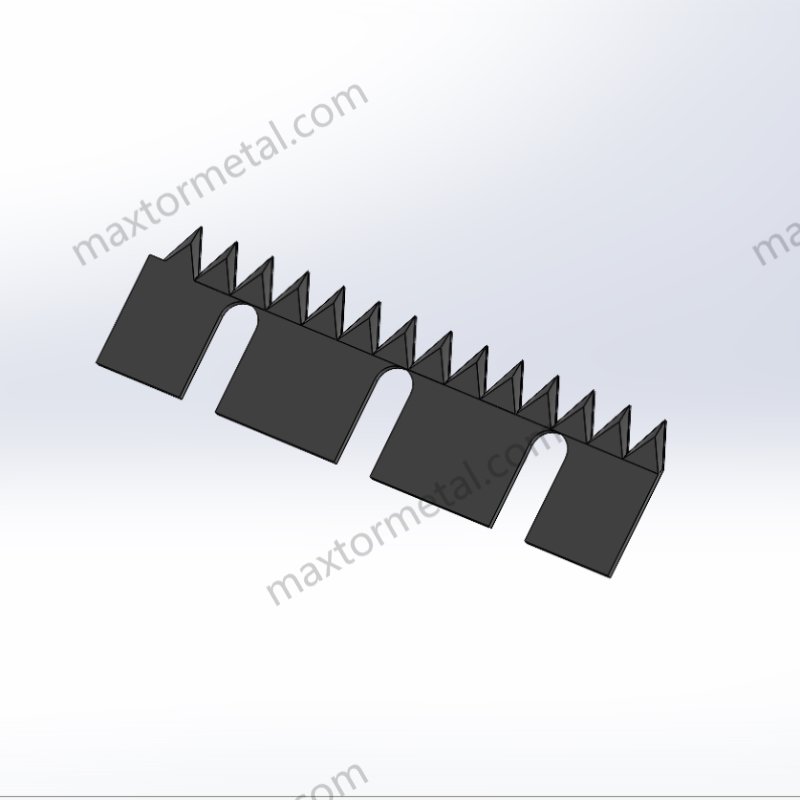
正しい選択 ミシン目ブレード材料選定 用途によって異なります。選択する材料は、ブレードの性能と耐久性に直接影響します。エンジニアは、切断する材料の種類、ブレードに必要な強度、動作速度を考慮します。 南京 Metal 幅広い種類の穿孔刃を取り揃え、お客様のニーズに最適な穿孔刃の材質選定を専門家がサポートいたします。技術要件と作業条件の両方を慎重に検討することで、より効率的で費用対効果の高い穿孔プロセスを実現します。
重要なポイント
- 適切な刃の材質を選択すると、刃の切れ味が向上し、寿命も長くなります。
- 材料を選ぶ際には、硬度、靭性、耐食性が重要です。
- タングステンカーバイドとセラミックの刃は最も長持ちしますが、初期費用が高くなります。
- ステンレススチール製の刃は、食品、医療、湿気の多い場所に最適です。
- 高速度鋼は強度があり、高速切断には高価すぎません。
- 切断対象に適した刃の材質を使用すると、損傷や無駄を防ぐことができます。
- 刃の手入れをすることで、切り口がきれいになり、刃の寿命も長くなります。
- 専門家に質問し、実際の状況でブレードを試してみると、最適なものを選ぶのに役立ちます。
ブレード材料の選択が重要な理由
パフォーマンスと寿命
刃の材質選びは非常に重要です。刃の寿命を左右するだけでなく、刃の性能にも影響します。それぞれの材質には独自の特性があり、刃の強度と切れ味に影響を与えます。炭素は刃を硬くし、クロムは刃の損傷や錆を防ぎます。超硬刃はタングステンとコバルトを使用しています。超硬刃は一部の鋼製刃よりもはるかに長持ちします。つまり、刃の交換頻度が少なく、生産ラインの停止回数を減らすことができます。
ヒント: 硬度と靭性の適切な組み合わせを選ぶことで、刃の寿命が長くなります。また、切れ味も安定します。
| 材料 | 硬度(HRC) | 耐摩耗性 | 標準寿命(52100鋼との比較) |
|---|---|---|---|
| 工具鋼 | 58-62 | 良い | 1倍 |
| ハイス鋼 | 60-65 | とても良い | 2~3倍 |
| タングステンカーバイド | 75-80 | 素晴らしい | 8~10倍 |
| ステンレス鋼 | 55-60 | 良い | 1~2倍 |
製品の品質
刃の素材を選ぶことで、仕上がりの質が変わります。それぞれの素材には特別な利点があり、刃の切れ味に影響を与えます。また、切り口の仕上がりもきれいになります。 高速度鋼は鋭い切れ味を保ち、きれいなカットを実現しますタングステンカーバイドは、大量の切断や過酷な作業に最適です。ステンレス鋼は錆びません。清潔さが重要となる食品包装や医療用途に最適です。
| ブレード材質 | 主な特性 | 製品品質への影響 |
|---|---|---|
| ハイス鋼 | バランスの取れた硬度と靭性 | きれいで均一なカット |
| タングステンカーバイド | 優れた硬度、耐摩耗性 | 長持ちする正確な穿孔 |
| ステンレス鋼 | 耐腐食性 | 敏感な用途に適した安全で衛生的なカット |
| 工具鋼 | 丈夫で硬化可能 | 耐久性があり、高負荷の穿孔にも耐えます |
適切な素材を選ぶことで、それぞれの穿孔刃が滑らかで正確な切断を実現できます。これは、包装、印刷、繊維産業にとって非常に重要です。
コストの影響
選択する材料によって、穿孔コストも変わります。超硬合金や高度な工具鋼などの高品質な材料は、初期費用は高くなります。しかし、耐久性が高く、交換頻度も少なくなります。そのため、修理費用を節約でき、作業を継続できます。一方、安価な材料は一見お得に思えるかもしれませんが、摩耗が早く、停止する回数も増えます。そのため、長期的にはコストがかさむ可能性があります。
| ブレード材質タイプ | 利点と特徴 | コストへの影響 |
|---|---|---|
| 高品質の素材 | 優れた耐摩耗性、長寿命 | 初期コストは高いが、長期コストは低い |
| 低品質の素材 | 強度が低いため、摩耗が早い | 初期コストは低いが、継続コストは高い |
ミシン目ブレード材料選定
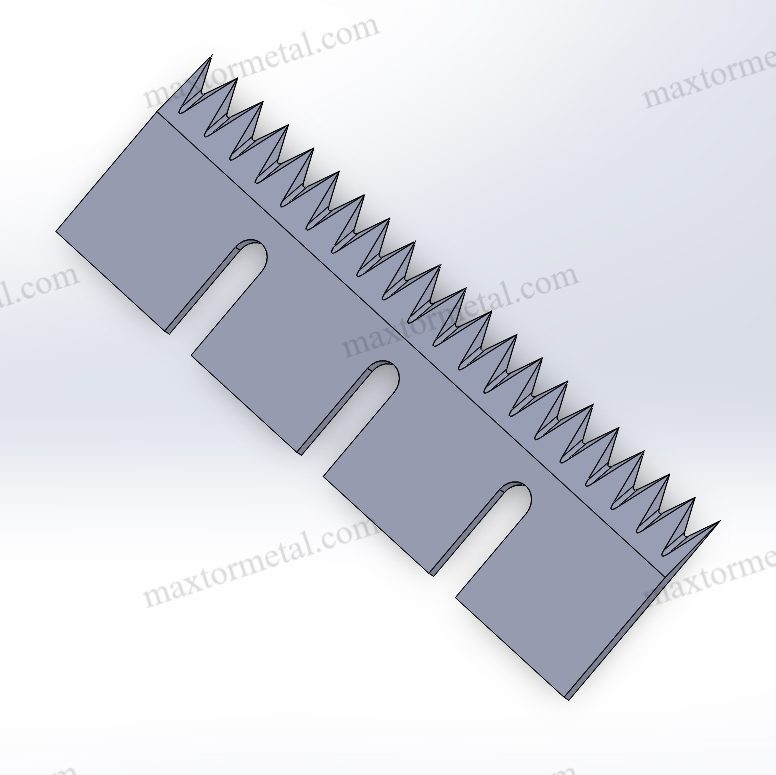
工具鋼
プロパティ
工具鋼は、 ミシン目ブレード材料選定硬くて丈夫なため、多くのメーカーに好まれています。また、摩耗も少ないのも特徴です。工具鋼には様々なグレードがあり、それぞれのグレードは切断や穿孔といった用途に特化しています。以下の表は、産業用ブレードに使用される主な種類を示しています。
| 工具鋼グレード | 主な特性 | 穿孔ブレードに関連する代表的な用途 |
|---|---|---|
| Wグレード(耐水硬化) | 高炭素、非常に硬い、低コスト、脆い、150°C以上で軟化する | 基本的な刃、工業用切削工具 |
| Oグレード(オイル硬化) | 高強度、耐摩耗性、優れた寸法安定性 | パンチ、ねじ切り工具、耐摩耗刃 |
| Aグレード(空気硬化) | 靭性良好、歪み少、機械加工容易 | 打ち抜き、金型曲げ、形状保持が必要なブレード |
| Dグレード(高炭素クロム) | 優れた耐摩耗性、靭性、高い圧縮強度 | 長期生産、木工ナイフ、成形ロール |
| Sグレード(耐衝撃) | 強い衝撃靭性、中程度の耐摩耗性 | せん断刃、チッパーナイフ、熱間および冷間加工刃 |
工具鋼の刃は、何度使用しても鋭い切れ味を保ちます。D2やS7などの鋼種は、強度が高く長持ちすることで知られています。これらの特性により、工具鋼は多くの用途に適しています。
用途
多くの業界で、工具鋼が穿孔に使用されています。包装会社は、気泡緩衝材や箱に切り取り線を入れるためにこれらの刃を使用しています。製紙会社は、小切手帳、ラベル、ノートなどに工具鋼を使用しています。これらの刃は、きれいな切り口を作るのに役立ちます。また、工具鋼はゴミ袋や芳香剤にも使用されています。刃は切れ味が良く、長持ちします。そのため、刃の修理や交換にかかる時間を削減できます。
高速度鋼(HSS)
利点
高速度鋼(HSS)には多くの利点があり、 ミシン目ブレード材料選定HSSは高温になっても硬く鋭い切れ味を保ちます。そのため、高速かつノンストップの切断に最適です。HSSにはタングステンやバナジウムといった特殊な金属が含まれており、耐熱性と長寿命を実現しています。HSS刃はカーボンやステンレス鋼の刃よりも長持ちします。また、 炭化物よりも硬いなので、簡単に欠けたり壊れたりすることはありません。
| 利点の側面 | 穿孔アプリケーションに関連する高速度鋼(HSS)の利点 |
|---|---|
| 耐熱性 | 高温でも硬度を維持し、耐久性を確保します |
| 硬度 | 硬い材料を切断し、鋭い刃先を維持 |
| 耐摩耗性 | 頻繁な使用でも炭素鋼やステンレス鋼より長持ちします |
| 強靭性と耐衝撃性 | 欠けることなく、衝撃や剛性の低いセットアップにも対応します |
| 加工性 | 精密なブレード製造のための機械加工が容易 |
| 切断速度 | より速い切断を可能にし、効率を向上 |
| 料金 | 炭化物よりもコスト効率が高い |
HSSブレードは高速生産ラインで威力を発揮し、厳しい場所でも安定した仕上がりを実現します。
アプリケーション
メーカーはHSSを 穿孔刃 金属加工および包装分野。 HSSブレードは軟質金属やアルミニウムの切断に適しています金属部品の製造に使用される丸刃に使用されます。HSSは短納期の作業や修理にも使用されます。強度が高く、様々な用途に使用できます。南京MetalはHSSを製造しています。 穿孔刃 これらの困難な仕事のために。
ステンレス鋼
耐腐食性
ステンレス鋼は錆びないので、 ミシン目ブレード材料選定 厳しい環境でも使用できます。304、316、316Lなどのステンレス鋼は、水や薬品による損傷を受けません。以下の表は、主なステンレス鋼のグレードを示しています。 穿孔刃:
| ステンレス鋼グレード | タイプ | ブレードの一般的な用途 | 耐食性 |
|---|---|---|---|
| 304 | オーステナイト系 | 汎用ブレード | 優れた耐食性、良好な成形性、幅広い用途 |
| 316 | オーステナイト系 | 海洋化学ブレード | モリブデンによる塩化物環境に対する優れた耐性 |
| 316L | オーステナイト(低炭素) | 溶接ブレード、化学用途 | 溶接時の耐性が向上し、炭化物の析出を防止します |
| 410 | マルテンサイト | 切削工具、刃物 | 中程度の耐食性、高い強度と硬度 |
| 440C | マルテンサイト(高炭素) | ナイフ、外科用刃 | 高い硬度と耐摩耗性、中程度の耐腐食性 |
304や316のようなオーステナイト系ステンレス鋼は強くて丈夫です錆びないので、食品、医療、化学用途に適しています。
食品および医療用途
ステンレス製の刃は、食品や医療現場で重要な役割を果たしています。滑らかな表面は細菌やカビの繁殖を防ぎ、清潔で安全な状態を保ちます。ステンレスは蒸気や化学薬品で洗浄しても強度を保ちます。食品工場では、ステンレス製の皿が洗浄やベーキングに役立っています。病院では、これらの刃が清潔で安全な状態を保つために役立っています。
タングステンカーバイド
硬度
タングステンカーバイドは非常に硬いため、穿孔刃の材質選定に最適です。硬度はロックウェル硬度計で測定されます。タングステンカーバイド製の刃はHRC75~85です。これは他のほとんどの刃よりも硬いです。そのため、刃は長期間鋭い切れ味を保ちます。作業者は頻繁に刃を交換する必要がなく、作業中の停止回数も減ります。
| ブレード材質 | 硬度(HRC) | 理想的な使用例 |
|---|---|---|
| ステンレス鋼 | 55~60歳 | 食品、医療、軽作業 |
| ハイス鋼 | 60~64歳 | 紙、木材、プラスチック |
| タングステンカーバイド | 75~85歳 | Metal、ゴム、複合材料 |
| セラミック | 80~90 | 箔、マイクロフィルム、光学 |
超硬合金製の刃は鋼製の刃よりも長持ちします。これにより、企業は時間とコストを節約できます。下の表は、炭化タングステンと他の材料の硬度を比較したものです。
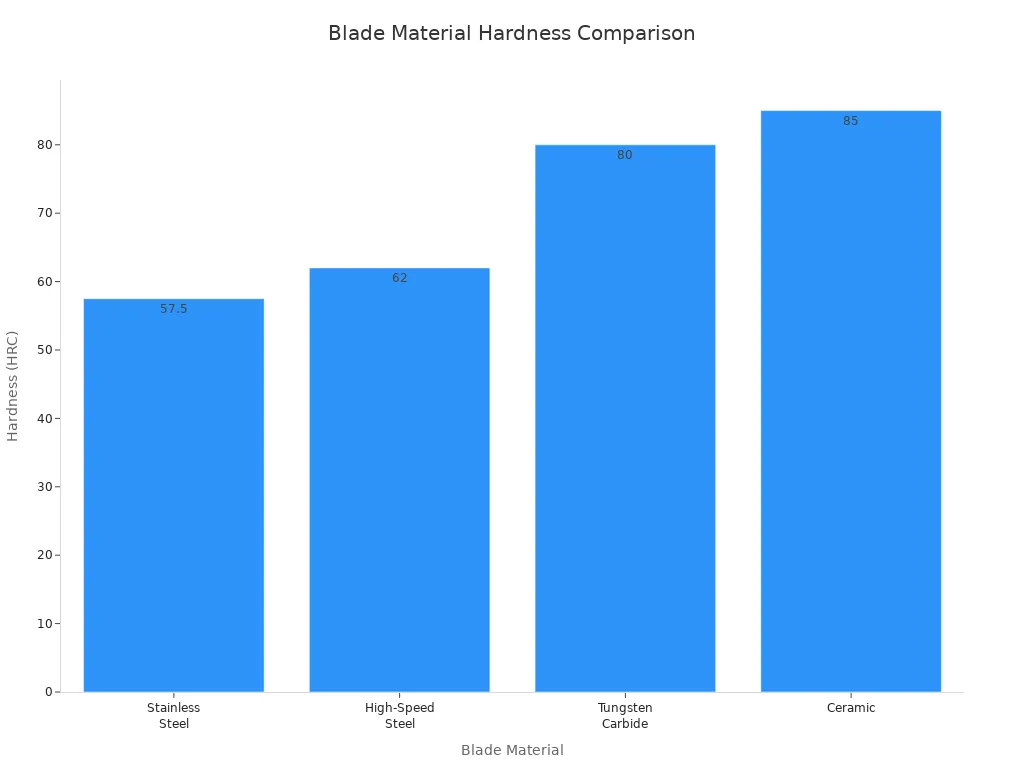
タングステンカーバイドは、厚いものや硬いものを切るのに最適です。これらの刃は、機械が高速で回転しているときでも優れた性能を発揮します。
産業用途
多くの作業で、タングステンカーバイド製の刃が穿孔に使用されています。印刷機では、素早くきれいなカットに使用されます。包装工場では、強度の高いフィルムや箔の切断に使用されます。袋やフィルムを製造する工場では、ノンストップのカットに使用されます。食品工場では、肉、パン、スナック菓子のパック詰めに使用されます。
- 印刷(印刷室、製本室、郵便室)
- 包装(フレキシブル包装、段ボール、箔、薄い金属)
- 加工(袋、フィルム、板紙、繊維、ゴム)
- 食品加工(肉、パン、乳製品、果物、野菜)
タングステンカーバイド製の刃は丈夫で耐熱性に優れています。動きの速い工場でも切れ味を保ち、廃棄物の削減に貢献します。これらの刃を使用することで、企業は刃の使用量を削減し、環境目標の達成に貢献します。
セラミック
Metallic以外の利点
セラミック刃は、穿孔刃の材質選定において特別な利点があります。これらの刃は非常に硬く、HRCは80~90です。セラミック刃は、ほとんどの金属刃よりも鋭い切れ味を長く保ちます。鉄を含まないため、錆びません。そのため、食品、化学薬品、その他の繊細なものの切断に適しています。
セラミック刃は軽く、熱くなりにくいため、温度管理が重要な場面で使用されます。金属ではないため、錆びたり汚れたりすることがありません。ただし、落としたりぶつけたりすると割れてしまう可能性があります。
- 優れた耐摩耗性
- 長持ちする切れ味
- 耐腐食性
- 軽量で耐熱性
セラミック刃は、優しく丁寧に切るのに最適です。きれいな切り口と長持ちする刃が必要なときに最適です。
特殊用途
セラミック製の穿孔刃は特殊な用途に適しています。工場では、グラスファイバーのような粗い素材の切断に使用されます。これらの刃は硬い表面でもすぐに摩耗しません。光学機器メーカーでは、薄いフィルムや箔の切断にセラミック製の刃を使用しています。研究室や電子機器メーカーでは、きれいで丁寧な切断に使用されています。
セラミック刃は、過酷な作業でも鋭い切れ味と強度を保ちます。長持ちし、物を汚さない刃を求める人に選ばれています。セラミック刃は壊れやすいという欠点もありますが、その優れた点は様々な特殊な用途でその価値を発揮します。
材質比較
適切なブレード素材を選ぶには、硬度、靭性、そしてコストを考慮する必要があります。以下の表は、一般的なブレード素材の比較を示しています。
| 材料 | 硬度 | 強靭さ | コストと費用対効果 |
|---|---|---|---|
| 工具鋼 | 硬くて丈夫。HRC 60~62 まで | 丈夫で耐摩耗性も中程度、研ぎやすい | コスト効率が高く、予算重視の用途には適しているが、寿命が短い |
| ハイス鋼 | 硬度は約700~900 HV。高温でも硬度を維持 | 炭化タングステンよりも強靭で、欠けにくく、耐衝撃性に優れています。 | 中程度のコスト。研ぐのが簡単で安価。工業用ナイフで人気がある。 |
| ステンレス鋼 | 工具鋼やHSSよりも硬度が低く、耐腐食性がある | 柔軟性が低く、研ぎの効率も低い | コスト効率に優れ、耐腐食性があるため湿気の多い環境に適しています。 |
| タングステンカーバイド | 最も硬い材質(1600~2200 HV); 最高の刃持ち | より脆く、衝撃を受けると欠けやすい | 初期費用は高いが、工具寿命が長いため交換頻度が減る |
| セラミック | 非常に硬く、最も長く鋭さを保ちます | 非常に脆く、欠けたり壊れたりしやすい | 研ぐのに費用がかかるが、精密で繊細な切断作業に適している |
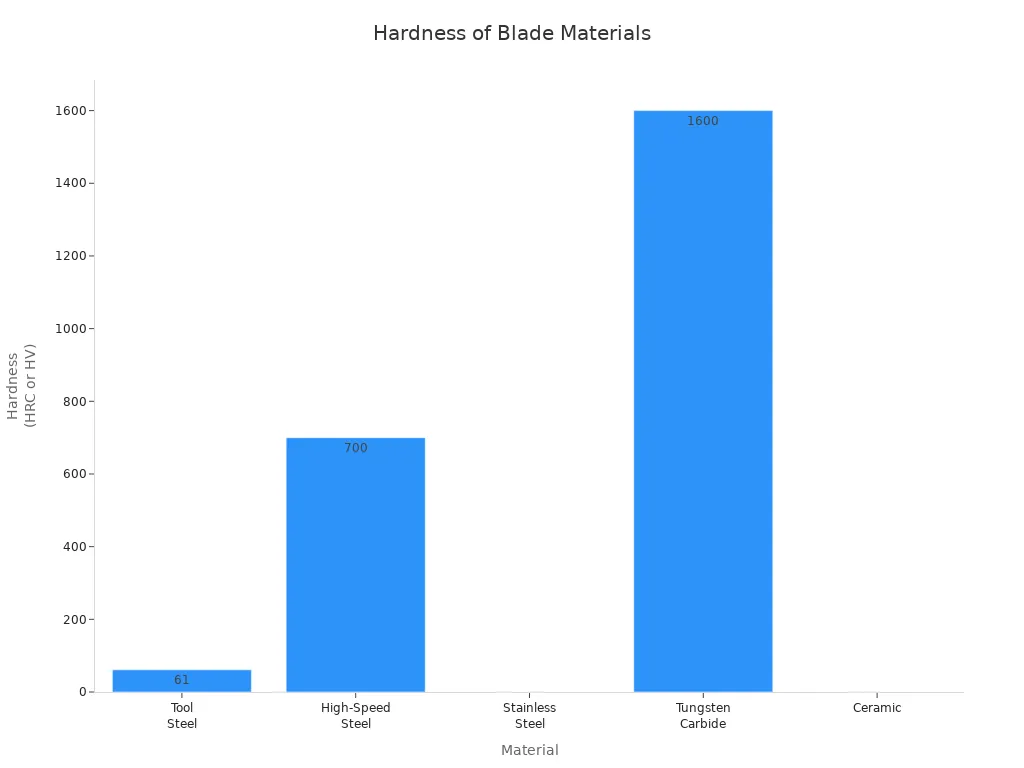
工具鋼と高速度鋼は丈夫で、価格もそれほど高くありません。ステンレス鋼は錆びにくく、湿気の多い場所に適しています。炭化タングステンとセラミックは最も硬く、刃持ちも最も長持ちします。これらは、難しい作業や特殊な切削に最適です。
穿孔ブレードの材質選択における要素
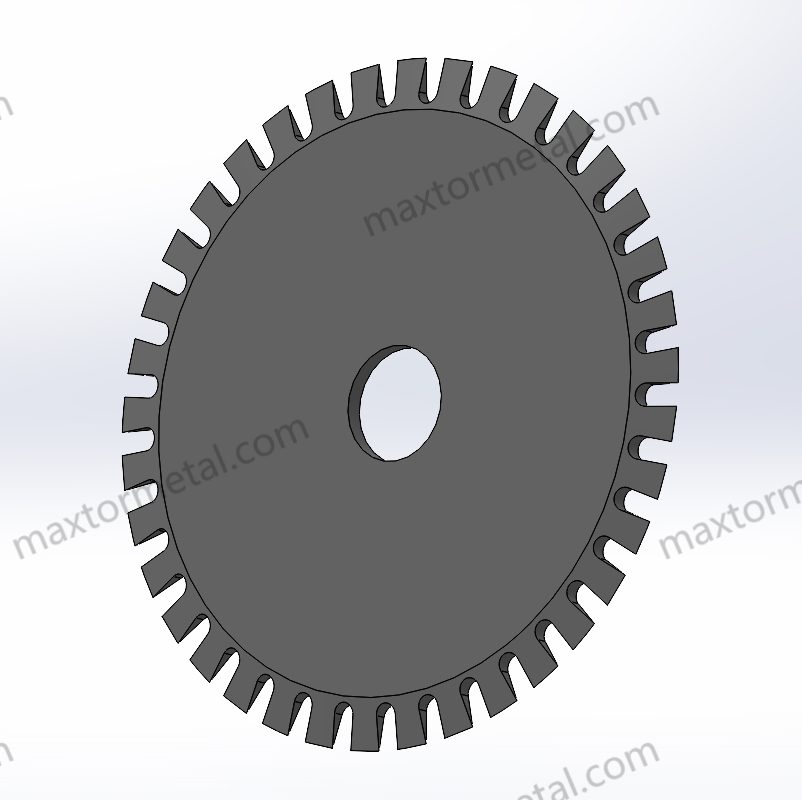
切断する材料
適切な刃を選ぶには、何を切る必要があるかを知ることから始まります。材質はそれぞれ異なり、刃物にとって扱いが難しい場合があります。例えば、 厚さ、密度、引き裂き強度 これらは非常に重要です。これらの要素は、どのブレード素材が最適かを判断するのに役立ちます。
- 紙やプラスチックフィルムは密度がそれほど高くないため、鋭く錆びない刃が必要です。工具鋼やステンレス鋼の刃が適しています。
- 段ボール、ラミネート、複合材はより丈夫です。表面が粗いため、刃の摩耗が早くなります。これらの素材には、タングステンカーバイド製またはセラミック製の刃の方が適しています。
- 錆が大きな問題となる場所では、ステンレス製の刃が求められます。これは食品や医薬品の包装において重要です。
- 窒化チタンなどのブレードコーティングは、ブレードの寿命を延ばします。特に機械が高速で稼働しているとき、ブレードの性能が向上します。
- 素材に合った刃を使うことで、きれいな切断が可能になります。また、刃の寿命を延ばし、生産をスムーズに進めることにもつながります。
素材に適した刃を選ぶことで、高い品質を維持できます。また、穿孔作業におけるダウンタイムの削減にも役立ちます。
耐久性のニーズ
刃を選ぶ際には耐久性が非常に重要です。特に、大量の刃物を切ったり、常に作業したりする必要がある場合は、耐久性が重要です。刃の素材は切れ味を保ち、簡単に壊れないものでなければなりません。以下の表は、一般的な刃の素材の耐久性を比較したものです。
| ブレード材質 | 耐摩耗性 | 硬度と靭性 | 切れ味の持続性と耐久性 | 大量生産への適合性 |
|---|---|---|---|---|
| タングステンカーバイド | 優れた耐摩耗性 | 非常に硬く、靭性が良い | 長期間使用しても切れ味を維持 | 大量の研磨材に最適 |
| 粉末1TP1トルギー鋼(例:CPM 10-V) | 優れた耐摩耗性と靭性 | 均一な微細構造を持つ高硬度 | 長持ちする切れ味と耐久性 | 要求の厳しい連続穿孔作業に適しています |
| 合金鋼 | 連続切削における優れた耐摩耗性 | バランスの取れた硬度と靭性 | 長期間にわたって切断精度を維持 | 高強度連続生産ラインに最適 |
| セラミックブレード | 比類のない耐摩耗性 | 非常に硬いが脆い | 切れ味の持続性に優れていますが、取り扱いには注意が必要です。 | メンテナンス頻度が低く、高精度、高生産能力の生産に最適 |
| 高炭素鋼 | 初期耐摩耗性は良好だが、すぐに摩耗が減少する | 硬度は良好だが靭性は低い | 高強度使用では頻繁に交換が必要 | 中程度のボリュームまたは予算に敏感な操作に適しています |
| ステンレス鋼 | 一般的に耐摩耗性が低い | 硬度が低く、耐腐食性に優れている | 摩耗の激しい環境では鈍くなりやすい | 腐食が重大な場合を除き、大量使用や高摩耗には適さない |
刃には硬度と靭性の適切な組み合わせが必要です。これにより、刃の寿命が延び、良好な性能が得られます。忙しい工場では、タングステンカーバイド鋼または粉末冶金鋼が最適です。頻繁に交換する必要はありません。
ヒント: 刃をどの程度の作業量で、どのような場所で使うのかを常に考えましょう。そうすることで、修理にかかる時間と費用を節約できます。
生産速度
作業速度によって、使用する刃の種類が変わります。高速で作業する機械では、刃は摩耗しやすく、すぐに熱くなります。そのため、刃の材質はそれに耐えられるものを選ぶ必要があります。
| 要素 | ブレード材料の選択への影響 | 説明 |
|---|---|---|
| 生産速度 | 速度を上げるには、タングステンカーバイドやコーティングされた高速度鋼のような、より硬く耐摩耗性の高い材料が必要です。 | これらの材料は、摩耗や熱の増加下でも鋭さと耐久性を維持し、自動化された環境でのきれいな切断とダウンタイムの削減を実現します。 |
| 低速 | 耐摩耗性の低い材料の使用が可能になるが、効率が低下する可能性がある | 速度が遅いと摩耗と熱が減少するため、より柔らかい材料を使用できますが、スループットが犠牲になります。 |
| フィルムの厚さと種類 | 薄いフィルムは破れを防ぐために、低速でセラミックのような非常に鋭く硬い刃が必要です。 | ハードブレードは、低速で切断する際に繊細なフィルムへのダメージを防ぎます。 |
| 速度と圧力、歯形のバランス | 切断性能とブレードの寿命を最適化するために重要 | これらのパラメータを調整すると、速度を変更しても切断品質とブレードの寿命を維持するのに役立ちます。 |
| 監視とテスト | 自動監視により、速度とブレードの選択を動的に調整できます。 | 生産条件に適応することで一貫した品質と効率を確保します |
オペレーターは、機械の性能に追いつく刃を必要とします。タングステンカーバイドやコーティングされた高速度鋼などの硬い刃は、速い作業に最適です。柔らかい刃は遅い作業にも使用できますが、性能が劣る可能性があります。状況の変化に応じて刃の種類を調整することで、最良の結果を得ることができます。
コストに関する考慮事項
選ぶ際にコストは非常に重要 ミシン目ブレード材料選定企業は刃の価格と寿命について検討する必要があります。タングステンカーバイドなどの刃は、最初は高価ですが、通常の鋼製刃よりもはるかに長持ちします。刃の寿命が長ければ、作業者は刃を交換する頻度が少なくなります。つまり、機械の停止回数が減り、作業者の時間を節約できます。ステンレス鋼や工具鋼の刃は購入価格が安価ですが、特に切断量が多い場合は、交換頻度が高くなる可能性があります。
簡単なチャートは、人々が決定を下すのに役立ちます。
| ブレード材質 | 初期費用 | 交換頻度 | 長期的な貯蓄 |
|---|---|---|---|
| 工具鋼 | 低い | 高い | 適度 |
| ハイス鋼 | 適度 | 中くらい | 良い |
| タングステンカーバイド | 高い | 低い | 素晴らしい |
| ステンレス鋼 | 低い | 高い | 適度 |
| セラミック | 高い | 非常に低い | 素晴らしい |
ヒント: 企業は価格だけでなく、あらゆるコストを考慮する必要があります。刃の交換頻度と、どれだけの時間を無駄にするかを考えてみましょう。そうすることで、どの刃が本当に最適なのかが分かります。
メンテナンス
刃のお手入れの頻度は、材質によって異なります。刃によっては、鋭い切れ味を保つために頻繁に研ぐ必要があるものもあります。工具鋼や高速度鋼の刃は、より手入れが必要です。一方、タングステンカーバイドやセラミックの刃は、切れ味が長持ちします。つまり、それほど頻繁に修理や交換をする必要がありません。
刃の手入れをすることで、刃の寿命を延ばすことができます。作業者は以下の点に注意してください。
- ブレードに損傷や摩耗がないか頻繁に確認してください。
- 使用後は刃をきれいにし、汚れが残らないようにします。
- 刃が鈍くなったら研いで、切り口をきれいに保ちましょう。
- 刃が欠けたり切れなくなった場合は交換してください。
刃の手入れをすれば、よりきれいに切断でき、材料の無駄が少なくなります。
安全性とコンプライアンス
安全とルールの遵守は非常に重要です ミシン目ブレード材料選定食品や医療現場などでは、安全で清潔な刃が求められます。ステンレス製の刃は錆びにくく、お手入れも簡単です。そのため、細菌が問題となる場所に最適です。
どのような刃を使用できるかについては、いくつかの規則で定められています。例えば、食品包装には、食品の安全性を損なうことのない刃が必要です。作業員は、自国の安全規則に準拠した刃を選ばなければなりません。
重要な安全性とルールのポイントは次のとおりです。
- 刃の材質は切断対象物と反応してはいけません。
- ブレードは簡単に掃除でき、お手入れも簡単でなければなりません。
- 企業は刃が安全であることを示す書類を提出する必要がある。
適切な刃を選ぶことで、作業員の安全と製品の清潔さを保つことができます。また、企業が規則を遵守し、問題を回避することにも役立ちます。
アプリケーション
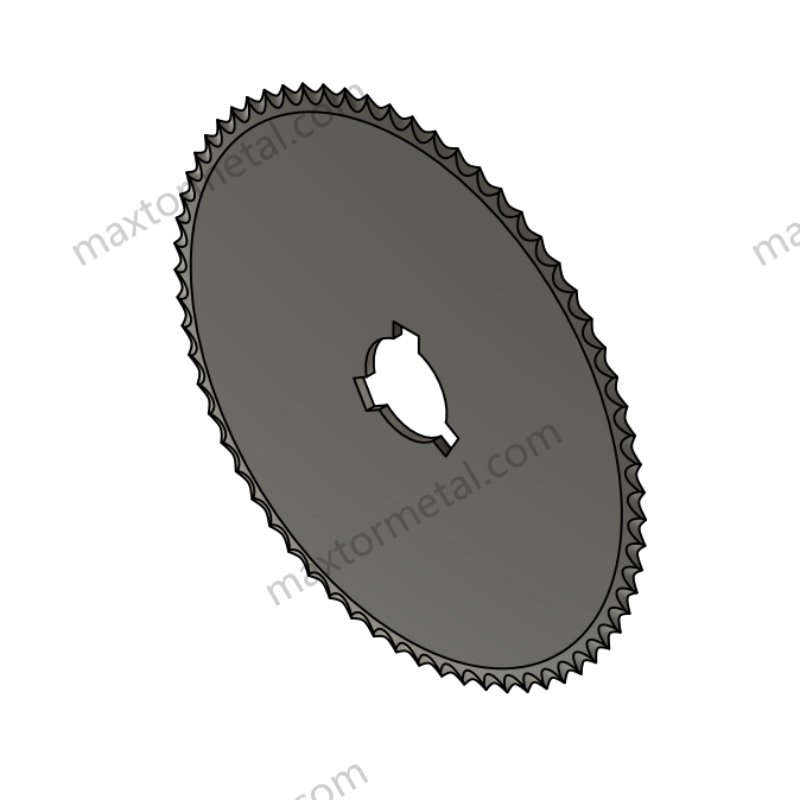
パッケージ
包装業界では、様々な用途にミシン目刃が使用されています。これらの刃は、袋や包装材に切り取り線を簡単に切ることができます。企業は、切断対象物と切断箇所に応じて刃の材質を選択します。工具鋼、高速度鋼、ステンレス鋼、超硬合金、セラミックなどは、いずれも包装において特殊な用途があります。
| ブレード材質カテゴリー | 主な特徴と選定理由 |
|---|---|
| 普通炭素鋼 | 基本的な硬化能力、単純な作業にコスト効率が良い |
| 合金鋼 | 硬度と性能が向上し、大量切断に適しています |
| 工具鋼 | 高い硬度と耐摩耗性を備え、要求の厳しい包装ラインに最適です。 |
| 炭化物 | 非常に高い硬度で刃の寿命を延ばし、研磨材に最適です |
| セラミック | 高温でも硬度を維持し、特殊包装に使用されます |
| 粉末Metals | 均一な性能、カスタム穿孔ナイフの優れた加工性 |
包装には、摩耗したり錆びたりしない刃が必要です。ステンレス鋼420と440は錆びないため、食品や液体の包装に適しています。工具鋼と超硬合金の刃は、硬いフィルムの切断に優れています。Nanjing Metalは、包装用のカスタム穿孔ナイフを製造しています。それぞれの用途に合わせて刃の材質を選定し、お客様の用途に最適な刃選びをサポートします。これにより、きれいな切断と刃の長寿命化が実現します。
ヒント: 適切な穿孔ナイフを使用すると、材料を節約でき、梱包が速くなります。
紙と印刷
製紙会社や印刷会社は、切り取りシートやラベルの切断にミシン目刃を使用しています。これらの用途では、切れ味が持続し、切れ味の良い刃が求められます。空気が乾燥しているため、刃の錆対策はそれほど必要ありません。刃先の鋭さと切断精度の方が重要です。
| ブレード材質 | 主な特性と利点 | 一般的な業界アプリケーションと注意事項 |
|---|---|---|
| 52100 スチール | 強くて硬く、クロムと炭素を含む | 耐久性と精度のために紙や印刷に使用されます |
| 高炭素鋼 | 鋭さを保ち、硬さはありますが耐腐食性はありません | 紙を切るような乾燥した環境でよく見られます |
| セラミック | 耐摩耗性に優れ、鋭い切れ味を保ちながらも脆い | 印刷などの過酷で乾燥した環境で使用 |
Paper perforating knives often use 52100 steel or high-carbon steel. These materials are strong and keep a sharp edge. Ceramic blades are good for long jobs where sharpness matters most.
Food and Medical
Food and medical packaging needs to be very clean and safe. Perforating blades here must not rust or get dirty. Stainless steel and D2 steel are the best choices. They do not corrode and are easy to clean. These materials follow safety rules and can be washed often.
Blades for food and medical jobs often need special features. Some packages need special holes for safety or air flow.
- Stainless steel blades stop rust and keep food safe.
- D2 steel is hard and resists rust.
- Custom blades can have special shapes and sizes for each job.
Textiles and Nonwovens
The textiles and nonwovens industry needs very accurate perforating blades for many jobs. Factories use these blades to make neat, easy-to-tear lines in fabrics and special textiles. Every material has its own problems. Fabrics might bunch up or come apart when cut. Nonwovens can stretch or break if the blade is not sharp. Picking the right perforating knife is very important for good work and saving time.
Key challenges in textile and nonwoven applications include:
- Fabrics can come apart if the blade is dull or the tooth shape is wrong.
- Soft, stretchy, or layered materials need special blade shapes for neat cuts.
- Fast machines need blades that stay sharp and do not wear out quickly.
- Each fabric type needs a different tooth shape, like crush cut or serrated blades.
- Circular knives are used for slitting, trimming, and perforating without hurting the material.
- Hot knives seal the edges to stop fraying, which is important for synthetic textiles.
| Challenge/Requirement | 説明 | Material/Design Solution |
|---|---|---|
| Clean, precise cuts without fraying | Blades must be sharp and have the right tooth shape to protect soft materials. | Premium-grade steel or carbide for sharpness and durability |
| Durability and sharpness maintenance | Blades should last through fast cutting and not need sharpening often. | Use of wear-resistant, high-quality materials like carbide |
| Compatibility with cutting machines | Blades must fit high-speed, accurate textile cutting machines. | Custom and OEM blade solutions tailored to fabric types |
| Matching blade geometry to fabric type | Blade thickness, edge, and tooth shape must match the softness and layers of the textile. | Customized blade design per fabric/nonwoven characteristics |
| Prevention of fraying and material damage | Sharp blades and the right tooth shape keep edges neat and stop unraveling. | Precision manufacturing and material selection |
| Operational demands | Blades must work well in busy factories and not need to be changed often. | Durable materials and optimized blade design |
Nanjing Metal makes custom perforating knives for textile and nonwoven jobs. Their team helps customers pick blades that fit each fabric’s needs. High-carbon steel and ceramic blades last a long time and help factories work without stopping. Carbide-tipped blades stay sharp longer and are good for fast cutting. Special blades, like crush cut knives, use pressure to cut soft or layered fabrics without harm. For synthetic fabrics, hot knives seal the edges so they do not fray.
ヒント: Picking the right perforating knife and blade material makes products better and cuts down on waste in textile factories.
カスタム穿孔ナイフ
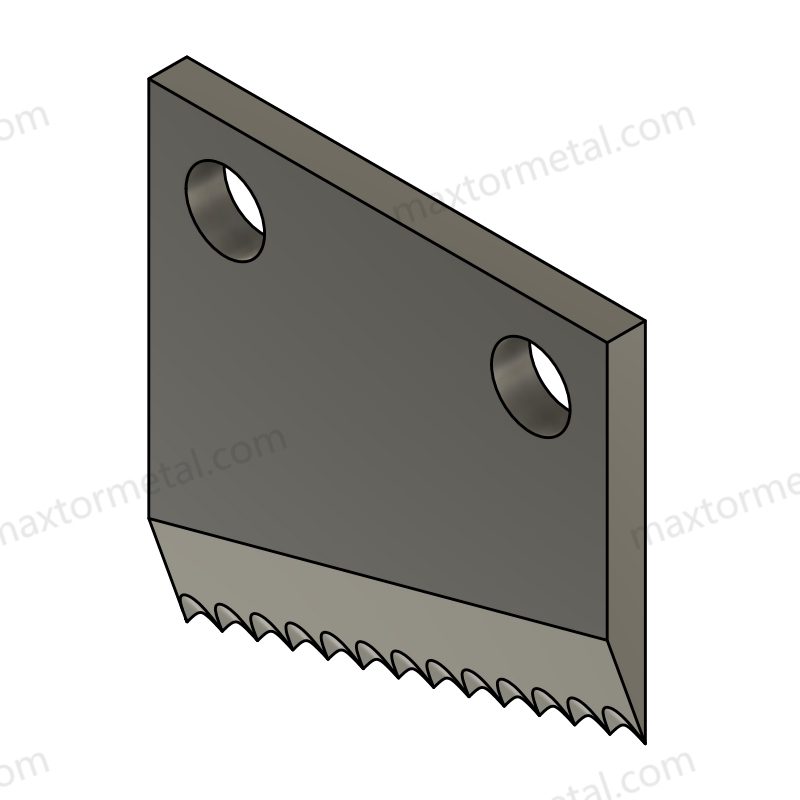
OEM and ODM Services
Manufacturers sometimes need blades made just for them. Standard blades do not always work for every job. OEM and ODM services help companies get special blades for their machines.
- ODM services make blades quickly and keep prices low.
- Customers get blades made for their own needs.
- Companies get help with marketing and training.
- Full support helps businesses grow and find new customers.
- Steel processing and heat-treatment happen in one place, so production is fast.
- Local teams help deliver blades on time.
- Production follows ISO 9001 rules and safety checks.
- OEM services make blades that fit special machines and jobs.
- These blades help factories work better and save money.
Design and Customization
Each job needs a different kind of blade. Custom perforating knives must fit the material and machine. Nanjing Metal works with customers to design the right blade. Their team can change blade shapes, tooth styles, and edges using drawings or samples.
Customers get these benefits:
- Blades shaped for paper, film, textiles, or rubber.
- Special coatings help blades last longer and cut smoother.
- Custom boxes and labels make blades easy to find and use.
- Orders can be small or big, depending on what is needed.
People can visit the カスタムブレードページ to learn more or ask for a price.
厳格な品質管理
Quality control is very important when making blades. Nanjing Metal checks every step to make sure blades are good. They look at materials, watch production, and check finished blades before shipping.
- Quality control makes sure cuts are clean and strong.
- Tough materials like tungsten carbide and high-speed steel help blades last.
- Custom blades for packaging help factories make neat products.
- Checking blades often and replacing them on time stops problems.
- Clean cuts mean less waste and help save money.
Tests show custom micro-tooth blades help factories work longer without stopping. Cleaning and sharpening blades helps them last and cut well.
よくある間違い
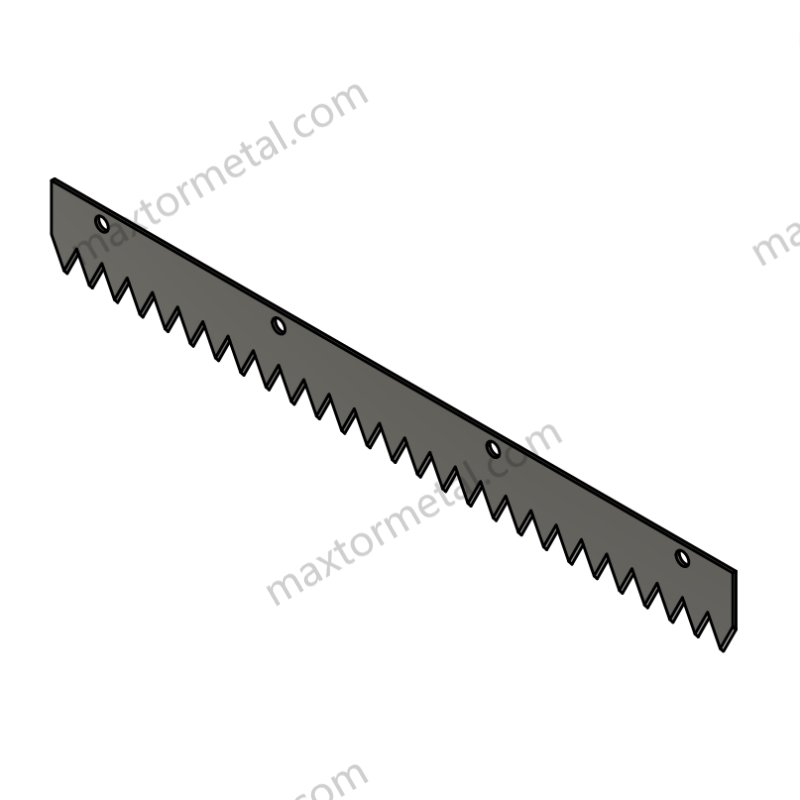
Ignoring Application Needs
Many people pick a blade material without thinking about the job. Every job needs something special from the blade. Packaging, textiles, and food processing all need different blade features. Some people choose a blade just because it is cheap or easy to get. This can make the blade work badly and waste materials.
Common issues when ignoring application needs:
- Blades wear out fast.
- Cuts are messy or not exact.
- Production slows down because blades need changing.
- Finished products do not meet quality rules.
ヒント: Always match the ミシン目ブレード材料選定 to what you are cutting and where you are working.
メンテナンスを見落とす
Taking care of blades is important for how well they work and how long they last. Some workers forget to check or clean blades often. If you do not take care of blades, they get dull faster and break more easily. This mistake makes costs go up and machines stop more.
Signs of poor maintenance:
- Blades get dull and need sharpening a lot.
- Material gets stuck or ripped when cutting.
- More waste and bad products.
- Machines stop more for fixing.
| メンテナンスタスク | 利点 | 頻度 |
|---|---|---|
| Cleaning blades | Stops buildup and rust | 使用後 |
| Inspecting for wear | Finds damage early | 週刊 |
| Sharpening edges | Keeps cuts good | 必要に応じて |
| Replacing blades | Keeps things safe and working | When worn |
Regular care helps blades last longer and makes ミシン目ブレード材料選定 work better. Companies should teach workers to follow a care plan.
Underestimating Cost Factors
Some buyers only look at the first price of a blade. They forget about costs for new blades, machine stops, and wasted material. Picking a cheaper blade might look smart at first. But it can cost more later.
Cost factors to consider:
- 新しい刃が必要な頻度
- Time lost for fixing or cleaning
- Waste from bad cuts
- How cuts affect product quality
| ブレード材質タイプ | 初期費用 | Replacement Rate | Long-Term Value |
|---|---|---|---|
| 工具鋼 | 低い | 高い | 適度 |
| 高速度鋼(HSS) | 中くらい | 中くらい | 良い |
| タングステンカーバイド | 高い | 低い | 素晴らしい |
| ステンレス鋼 | 低い | 高い | 適度 |
| セラミック | 高い | 非常に低い | 素晴らしい |
Smart ミシン目ブレード材料選定 looks at all costs, not just the price.
Misjudging Material Compatibility
Picking the wrong blade for a certain material causes problems. Many people forget that different materials react in their own way when cut. Paper, plastic, rubber, and textiles all act differently with blade edges and hardness. If the blade does not match the material, you get dull blades, rough cuts, or chipped edges.
Operators need to know what both the blade and the material are like. Stainless steel blades do not rust, but they can get dull fast on rough composites. Tungsten carbide blades stay sharp longer, but they might chip on soft, stretchy things. Ceramic blades are very sharp, but they can break if used on thick or hard materials.
The table below shows some common mistakes:
| Substrate Type | 推奨ブレード材質 | Common Compatibility Mistake | 結果として生じる問題 |
|---|---|---|---|
| 紙 | Tool Steel, HSS | Using soft stainless steel | Dull edges, uneven perforation |
| Plastic Film | Tungsten Carbide, Ceramic | Using tool steel | Rapid wear, frequent replacement |
| ゴム産業 | タングステンカーバイド | Using ceramic | Blade chipping, poor cut quality |
| 繊維 | High-Speed Steel, Ceramic | Using carbide | Fraying, blade damage |
| 食品包装 | ステンレス鋼 | Using tool steel | Rust, contamination risk |
Some companies do not pay attention to these details. They pick blades just because they are cheap or easy to get. This leads to more machine stops and lower product quality. Teams should match blade hardness, toughness, and edge shape to the material.
ヒント: Try out blade materials on a small group before using them for everything. This helps make sure they work well and saves money.
When checking if things match, look at rust resistance, how long the edge stays sharp, and if the blade can handle fast work.
Operators should think about the environment too. Wet places, heat, and chemicals can change how blades work. Stainless steel is good for wet areas. Carbide is better for dry, fast jobs.
If you pick the wrong blade, you waste money and materials. Picking the right perforating blade material selection gives clean cuts, longer blade life, and smooth work. Teams that care about matching blades see fewer problems and better products.
Choosing the right blade for each material keeps machines safe and makes better cuts.
穿孔刃の材質選定に関するヒント
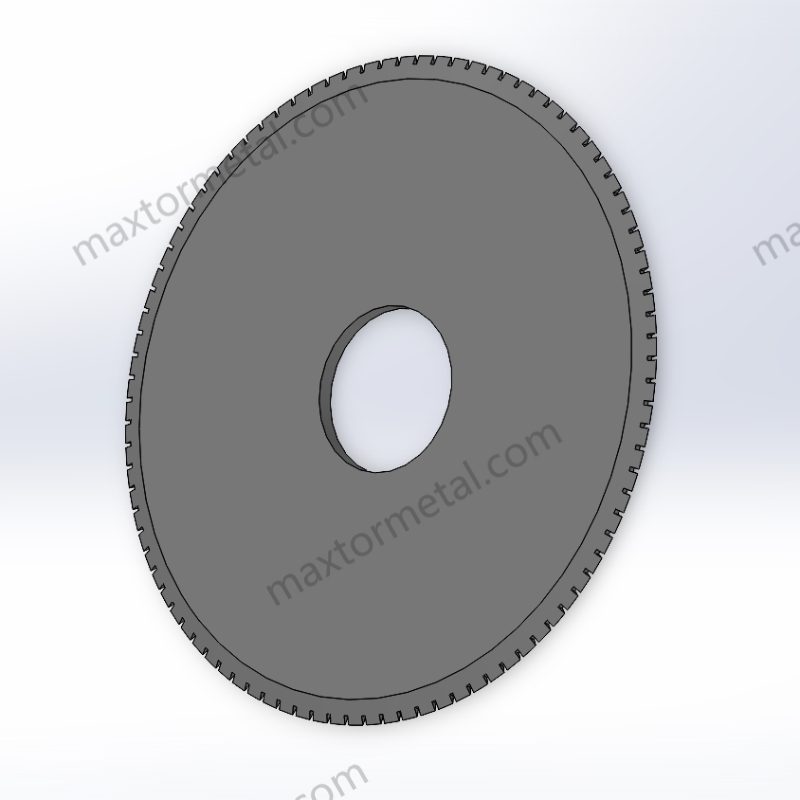
専門家に相談する
Getting help from experts is important when picking perforating blade material selection. Professionals know what each blade material can do. They understand how blades work in different places. Asking experts helps companies avoid expensive mistakes.
ヒント: Always get technical support before choosing perforating blade material selection. Experts look at what you are cutting, how fast you work, and safety needs. They help find the best blade for your job.
Talking to a supplier makes sure the blade fits the machine and the material. Their engineers check drawings and samples. They give ideas to make blade design and material better. This helps blades work well and last longer.
Test in Real Conditions
Testing blades in real work is very helpful. Companies should not only use technical data. Real tests show how blades work with the chosen material. Workers can check if the blade is sharp, strong, and cuts well. They see if the blade is safe and follows rules.
A simple way to test blades is:
- Put the blade in the production line.
- Run a small batch with the right material.
- Check if the cuts are clean and sharp.
- Write down how fast the blade wears out.
- Change blade material selection if needed.
注記: Testing finds problems early. It lets companies fix things before big production starts.
Balance Cost and Performance
Companies need to think about both cost and performance for perforating blade material selection. Good blades may cost more at first. They last longer and help machines run without stopping. Cheap blades wear out fast. This means more repairs and slower work.
| ブレード材質 | 初期費用 | 寿命 | メンテナンスの必要性 | Overall Value |
|---|---|---|---|---|
| 工具鋼 | 低い | 短い | 高い | 適度 |
| ハイス鋼 | 中くらい | 中くらい | 中くらい | 良い |
| タングステンカーバイド | 高い | 長さ | 低い | 素晴らしい |
| ステンレス鋼 | 低い | 短い | 高い | 適度 |
| セラミック | 高い | 非常に長い | 非常に低い | 素晴らしい |
People who make decisions should look at all costs. They need to think about blade price, how often blades need changing, and how well production goes.
Companies that balance cost and performance get better results. They save money and make better products with smart perforating blade material selection.
Stay Updated on Materials
The world of ミシン目ブレード材料選定 changes fast. New materials and new technology come out every year. Companies that learn about these changes get ahead. They can make their cutting better, spend less money, and make nicer products.
Engineers and managers should check for new blade materials often. Many suppliers bring out new alloys, coatings, and ways to make blades. These new ideas help blades work better and last longer.
ヒント: Sign up for industry newsletters and go to trade shows. These places share news about new materials and smart ways to use ミシン目ブレード材料選定.
Here are some ways to keep up:
- Read technical journals: These magazines have stories about new blade materials and how they are used.
- Join professional groups: These groups share research, news, and case studies about ミシン目ブレード材料選定.
- Go to webinars and workshops: Experts talk about new trends and answer questions about how materials work.
- Ask suppliers for advice: Companies know about new products and can help pick the right materials.
A simple table helps track updates:
| ソース | Type of Information Provided | 頻度 |
|---|---|---|
| Technical Journals | Research articles, material reviews | 月次 |
| Industry Newsletters | Product launches, trends | 週刊 |
| Trade Shows | Live demos, networking | 毎年 |
| Supplier Updates | New materials, technical support | As released |
Keeping up with ミシン目ブレード材料選定 helps companies avoid old choices. New materials can be tougher, stay sharper, or be safer. For example, new coated high-speed steel and powder metallurgy have changed how factories do lots of cutting.
注記: Always check how blades work and compare them to new ones. Companies that try new materials in real work see better speed and product quality.
Staying updated is not just about following what is popular. It means making smart choices that help work and save money. Every new step in ミシン目ブレード材料選定 can give cleaner cuts, longer blade life, and better products for everyone.
Picking the right perforating blade material selection helps make products better. It also helps blades last longer and saves money. Companies get help from experts who know what works best. Custom blades are made for each job to fit specific needs.
- Nanjing Metal’s team gives advice to help pick the best blade.
- Custom blades and careful checks help packaging, printing, and textiles.
For special help and answers, talk to Nanjing Metal’s sales engineers ここ.
よくある質問
What is perforating blade material selection?
Perforating blade material selection means picking the best material for a perforating blade. The choice depends on what you need to cut. It also depends on how long the blade should last. The place where you use the blade matters too.
Why does perforating blade material selection matter?
Choosing the right perforating blade material helps blades last longer. It makes cuts cleaner and keeps workers safe. It also saves money by needing fewer blade changes and less stopping.
Which materials work best for food packaging blades?
Stainless steel and D2 tool steel are best for food packaging. These materials do not rust and are safe for food.
How does production speed affect perforating blade material selection?
Faster machines need blades made from harder materials. Tungsten carbide and coated high-speed steel work well at high speeds. These materials keep blades sharp and help stop work delays.
How often should companies replace perforating blades?
How often you change blades depends on the blade material and what you cut. It also depends on how much you use the blade. Harder blades like tungsten carbide last longer. Checking blades often helps know when to change them.
What factors should companies consider during perforating blade material selection?
Companies should think about what they need to cut. They should also think about how tough the blade needs to be. Speed, cost, care, and safety rules are important too.
参照
紙用ミシン目ブレードの日常メンテナンスのヒント:クリーニング、潤滑、研磨、およびブレード先端保護のルール
プラスチックフィルム用ミシン目ブレードの最適化:速度、圧力、歯形の組み合わせ
パッケージング用ミシン目ナイフが包装業界で広く使用されている理由


